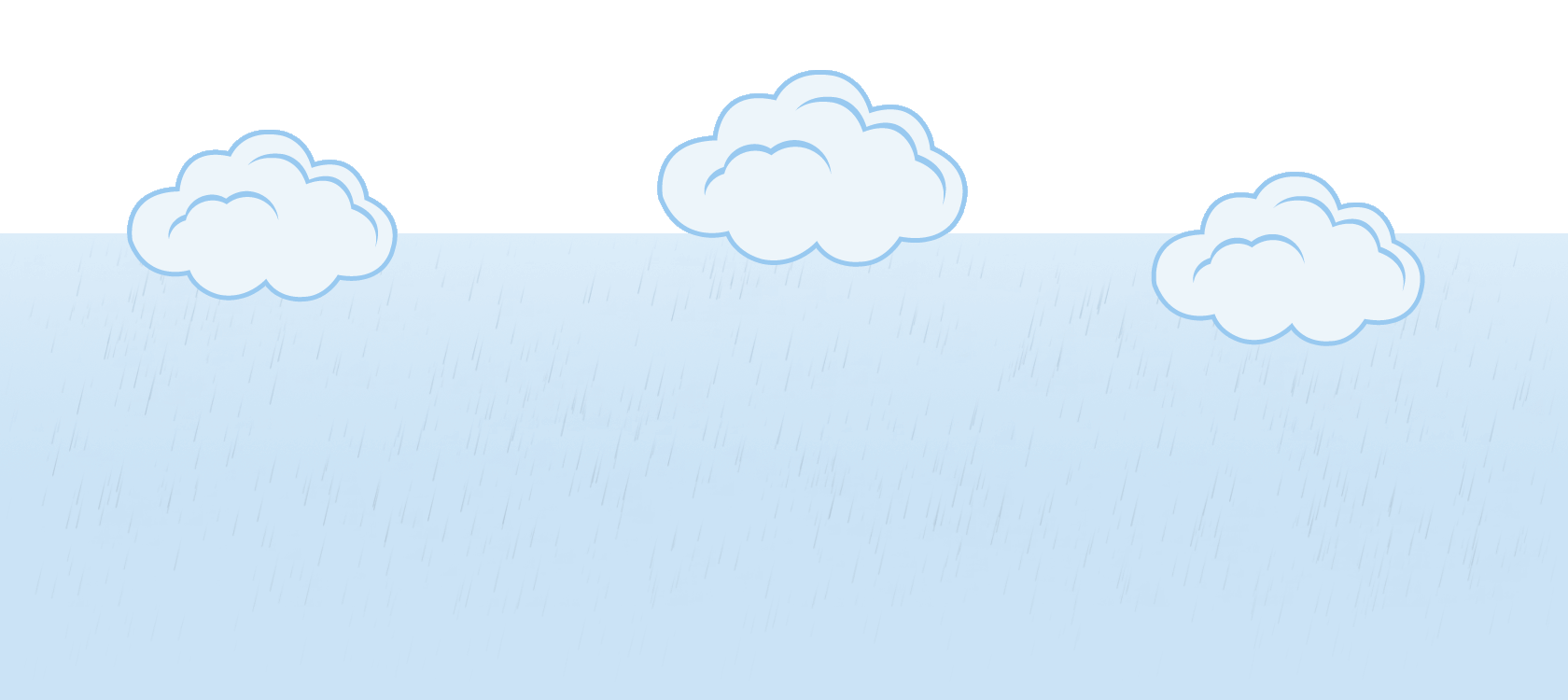In our article Science Lessons about Our Environmental Impact, we discussed the idea that young students should not be introduced to human-caused (anthropogenic) climate change. Instead, we highlighted lessons about the effects of litter, air pollution, and water pollution and those lessons that presented student-friendly solutions to these problems. We also included two lessons designed to introduce students to the greenhouse effect without delving into climate change. In keeping with this focus, we’ve divided this month’s bookshelf into two categories: books about our environmental impact and books with information about the greenhouse effect.
Books About Our Environmental Impact
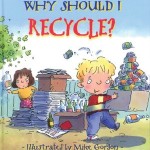 Why Should I Recycle? Jen Green. 2002. Nonfiction picture book. Grades K-2.
Why Should I Recycle? Jen Green. 2002. Nonfiction picture book. Grades K-2.
This book explains the importance of recycling. It includes a number of tasks students themselves can carry out to begin recycling. The book includes two pages of notes for parents and teachers, which include suggestions for reading the book with students and for follow-up activities.
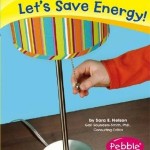 Let’s Save Energy! Sara E. Nelson. 2007. Nonfiction picture book. Grades K-2.
Let’s Save Energy! Sara E. Nelson. 2007. Nonfiction picture book. Grades K-2.
In this easy-to-read book, students learn about energy, how we use natural resources to generate energy, and how to conserve energy. Because of its small size (6 x 7 inches), this book is best suited for reading with individual students or sharing in small groups.
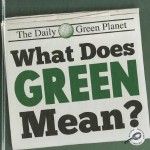 What Does Green Mean? Barbara L. Webb. 2012. Nonfiction. Grades K-3.
What Does Green Mean? Barbara L. Webb. 2012. Nonfiction. Grades K-3.
What does it mean to be green? Students learn about eco-friendly choices in this book. The book includes an activity to help students measure their carbon footprint. A glossary, an index, and a table of contents allow young students to learn about and use nonfiction-text features to locate information.
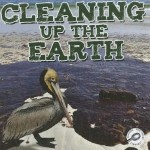 Cleaning Up the Earth. Precious McKenzie. 2012. Nonfiction. Grades K-3.
Cleaning Up the Earth. Precious McKenzie. 2012. Nonfiction. Grades K-3.
Students are introduced to pollution and global warming in this book, as well as actions they can take to clean up the Earth. A glossary, an index, and a table of contents allow young students to learn about and use nonfiction-text features to locate information.
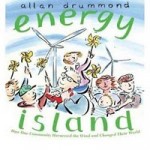 Energy Island. Allan Drummond. 2011. Nonfiction picture book. Grades K-5.
Energy Island. Allan Drummond. 2011. Nonfiction picture book. Grades K-5.
The people on the small island of Samsø in Denmark used energy much as most Americans do—driving cars and heating homes with power from fossil fuels. Change came slowly, but people on the island learned that they had a valuable resource—wind! With a community effort, individual changes made a big impact; Samso is now a destination for people from all over the world who want to learn about renewable energy. The text can be read on multiple levels, and older students can read more details from the sidebars. The story and its illustrations make this a very personal story that will reach students’ hearts and inspire hope for our future.
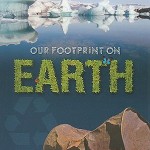 Our Footprint on Earth. Jeanne Sturm. 2010. Nonfiction. Grades 3-5.
Our Footprint on Earth. Jeanne Sturm. 2010. Nonfiction. Grades 3-5.
Humans make many choices that affect the planet. Some of these choices are individual: what we eat, how much we recycle, how much energy we use. Some choices are bigger: what fuels we use, what is used to grow our food, where people make their homes. This title takes a closer look at energy resources, habitat conservation, water use, and what we can do to have a more gentle impact on the planet.
Books With Information About the Greenhouse Effect
While we do not advocate for teaching about climate change in the elementary grades, we’ve included these books for their information on the greenhouse effect. See how we’d use these books in an elementary classroom in our unit plan.
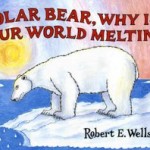 Polar Bear, Why Is Your World Melting? Robert E. Wells. 2008. Nonfiction picture book. Grades 3-5.
Polar Bear, Why Is Your World Melting? Robert E. Wells. 2008. Nonfiction picture book. Grades 3-5.
This book uses the declining sea ice in the Arctic and its effect on polar bears to introduce students to climate change. The book includes an imaginative two-page spread explaining the greenhouse effect. It also discusses how the use of fossil fuels is adding additional carbon dioxide to the atmosphere, leading to increased temperatures. Finally the book explores future consequences of climate change and ways that students and their families can conserve energy.
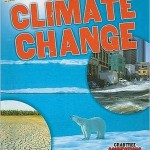 Ask An Expert: Climate Change. Richard Spilsbury. 2011. Nonfiction. Grades 3-5.
Ask An Expert: Climate Change. Richard Spilsbury. 2011. Nonfiction. Grades 3-5.
After sharing the basic concept of the greenhouse effect, this book shares different ways climate change is affecting the planet—from rising oceans to soggy permafrost to changes in rainfall to disruption of food chains. The small pictures and font size make this book best for individual reading or sharing with small groups. A table of contents and an index make it useful for locating specific information.
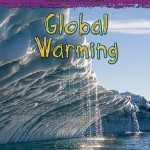 Global Warming. Angela Royston. 2008. Nonfiction. Grades 3-5.
Global Warming. Angela Royston. 2008. Nonfiction. Grades 3-5.
Each two-page spread of this book addresses a single topic related to climate change, including the greenhouse effect, the cause and effects of global warming, and ways to live a low-carbon life. A table of contents, a glossary, and an index also make this book useful for locating specific information.
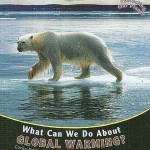 What Can We Do About Global Warming? Lorijo Metz. 2010. Nonfiction. Grades 3-5.
What Can We Do About Global Warming? Lorijo Metz. 2010. Nonfiction. Grades 3-5.
A simple look at what global warming is, what might be causing it, and the effects of quickly rising temperatures on humans and Earth’s ecosystems. The book also provides some information on the Earth’s natural mechanisms for controlling greenhouse gases and things humans can do to curb greenhouse gas emissions.
This article was written by Kate Hastings, a youth librarian at the Upper Arlington Public Library near Columbus, Ohio. Email the author at beyondweather@msteacher.org.
Copyright December 2011 – The Ohio State University. This material is based upon work supported by the National Science Foundation under Grant No. 1034922. Any opinions, findings, and conclusions or recommendations expressed in this material are those of the author(s) and do not necessarily reflect the views of the National Science Foundation. This work is licensed under an Attribution-ShareAlike 3.0 Unported Creative Commons license.
